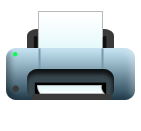
Direct deposit is a feature included within a payroll program that allows you to deposit employee pay directly into a bank account. Payroll software programs vary when it comes to their direct deposit capabilities. For example, some systems allow you to deposit funds to your choice of bank account, while others require the money to be transferred via their service. Here are some factors to consider when trying to find the right direct deposit feature for your business.
Transfer options.
There are two main ways payroll systems allow you to transfer pay. You can either have the funds deposited directly into each employee’s individual bank account from your own choice of bank, or you can use a service which takes the funds and deposits them into the employee bank accounts for you. By using your own bank to deposit the funds, you may save money; however some banks do charge for this service and fees vary greatly. Using a service to deposit the funds does incur ongoing costs also, so be sure to check the costs of the service before deciding on one.
Deposit employee pay and third party pay.
Obviously the most important aspect of direct deposit is the ability to distribute employee pay to their bank accounts. But some payroll systems go a step further, and also provide an option to deposit third party pay electronically. This function allows employers to pay third party payees, such as 401K management companies or insurance companies, via electronic deposit, rather than processing a check manually. Sending these payments electronically can be a huge time saver when compared to writing and sending paper checks.
Deposit to multiple bank accounts.
A basic direct deposit system will allow for one account, but some systems allow for multiple deposit accounts. This way, employees can deposit part of their check to checking, part to savings, another part to a holiday savings account, and so on. While this typically does not cost the employer extra, it provides employees with the perk of more comprehensive money management options. So it’s a win-win!
Pay cards
Some payroll companies offer employers the option of loading (depositing) employee pay to a pay card (a debit card) instead of into a regular bank account. This is an excellent option for employees who do not have bank accounts. For those without bank accounts, it eliminates concern about where to cash a check, and also the associated check cashing costs.
It pays to use direct deposit, and all the features that go along with it. Check into your payroll software and what it can offer you for direct deposit. You could be on your way to great time savings and happier employees.

Accounting software programs can be purchased in a variety of ways, depending on your needs. One of them will most certainly work for you and your business.
Brick and mortar retail store
You can purchase basic accounting software programs on the shelves of retail stores. It’s convenient to put the software in your cart purchase it so easily, but keep in mind that if you have questions about the program’s specific functionality, you may have troubles getting those questions answered by the retail sales associates.
Software developer
Buying software directly from the company that developed can be beneficial because you can get your questions answered before making a purchase. You may even be able to get a personalized demonstration of the software, something that is nearly impossible for retail stores to offer. Talking to somebody who knows and understands the system, and also takes to time to understand your business, can not only bring you peace of mind, but can ensure a better accounting software program match for your business.
Online
Buyers do most of their research online these days, and therefore it might be tempting to simply go in and purchase accounting software programs online. If you decide to purchase in this way, be sure you are able to really understand how the system works and get all of your questions answered before buying. This might require communication via email or phone, but the time spent will be well worth it down the line. After all, this will be the tool used to manage your business finances!

MICR stands for “Magnetic Ink Character Recognition” and is a special kind of ink that can be detected by check processing machines. Some payroll software systems offer the ability to print checks on blank check stock, using MICR ink. This feature can benefit some businesses greatly and make payroll processing much easier. Here are some of the ways printing your checks on blank check stock with MICR ink can help you and your business.
Various check designs, various companies.
If you run the payroll for multiple companies, the MICR printing option could save you some serious time and frustration. Instead of having to load up the correct check paper for each separate company, use the MICR option and print checks with different designs onto the same blank check stock. This can also save you money if suspect there will be an address change or other information revision to your check stock. Instead of throwing out the old stock, you will be able to simply change the design and print onto your blank check paper. Using the MICR option allows you to print checks using multiple bank accounts too, especially helpful in the case of doing the payroll for separate companies.
Print check signature.
Another benefit of MICR printing is the ability to print a signature on file right onto your paychecks, especially helpful if the signing party is away or cannot sign the checks. Payroll software will typically require you to set up a security policy for each signature, so that only users who are given permission will have access to print checks with them. This is especially important, since the printing of checks would typically be allowed to only a very few people.

Guess what, May 12th is National Limerick Day! In honor of the occasion, here is a limerick to brighten your day.
If it’s profits that make your heart sing,
Then a budget might just be your thing.
So make a plan of where to spend
Follow it and try not to bend
Then savings and profits you’ll bring.
Happy National Limerick Day!